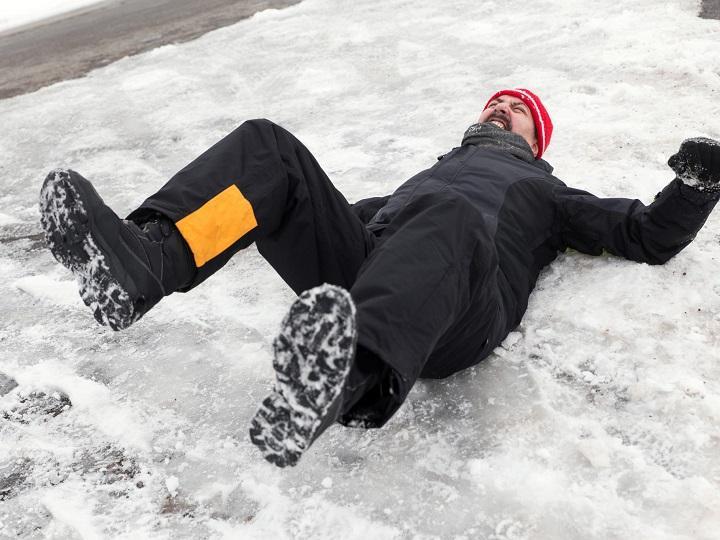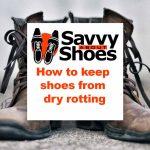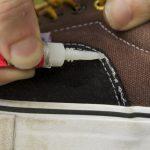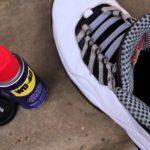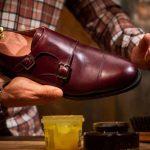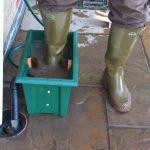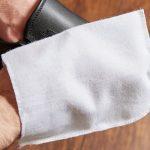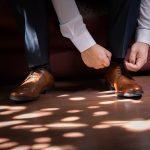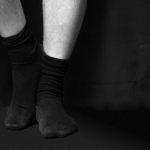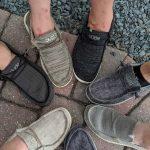I think the easiest way to not slip on ice is to lock your door, grab your favorite blanket, some hot chocolate, a nice tv show, and wait for the ice to melt. Alas, life is cruel, especially when the wife sends you to get groceries while she is comfortable in bed. The best way to Avoid Slipping on ice is to Avoid hurrying or taking shortcuts through places where snow or ice clearance is still in progress. Choose appropriate footwear – flat footwear with rubber soles outperforms leather-soled or high-heeled shoes on ice and snow. Where possible, use handrails.
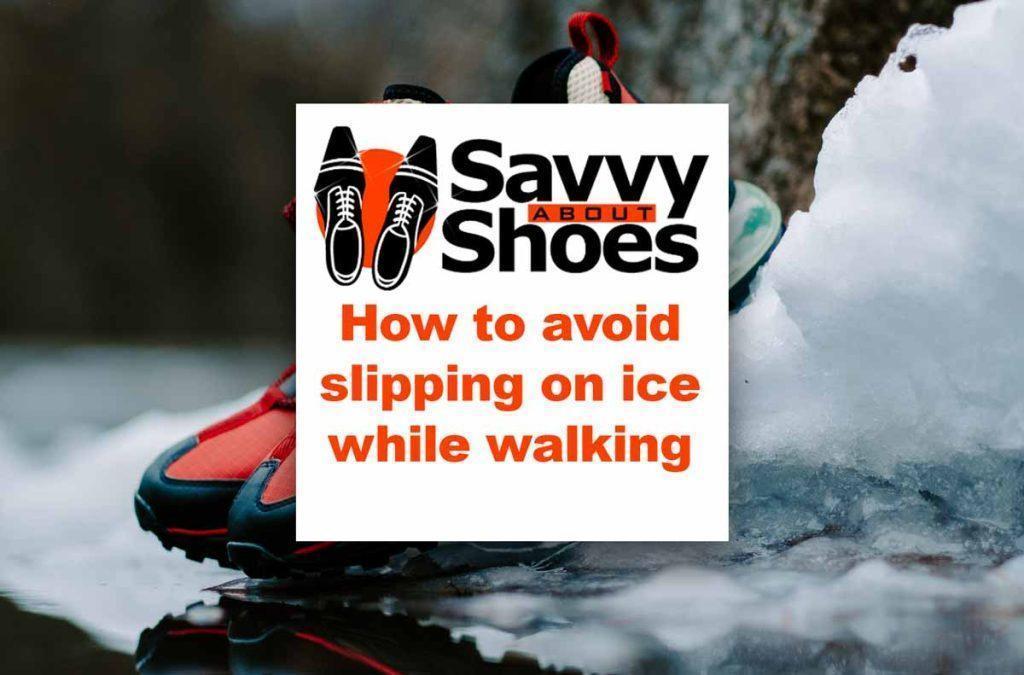
Photo by matthew smith on Unsplash
Related: Best Hoka Shoes for Walking, Shoes for Everesting you Should know about – running 8848 meters, Best Heated Insoles in 2022
Jump immediately to the FAQ section on this page
Key takeaways to avoid slipping on ice or snow
- Wear traction-enhancing shoes or boots. Look for shoes with a firm, non-slip sole that will handle ice surfaces well. You can buy ice cleats to put on top of your shoes.
- Adjust your behavior. Take modest, steady steps and prevent unexpected movements that could throw you off balance.
- Maintain a low center of gravity by slightly bending your knees and leaning forward. This will assist you in maintaining your balance and avoiding falls.
- If available, use handrails or other items for support. This can assist you to avoid falling.
- Avoid carrying heavy goods that could restrict your movement or cause you to lose your balance should be avoided.
- If at all possible, avoid walking on ice. If you must walk on ice, try to stay on cleared or salted paths or sidewalks.
Related: How To Prevent Heel Slippage in Pumps
Table of content
- Key takeaways to avoid slipping on ice or snow
- How common is slipping and falling on ice?
- How Do You Avoid Slipping on Ice when Walking?
- Using Ice Cleats to Avoid Slipping on Ice
- Using Slip Resistant Shoes
- Use Salt and Sand to Cover the Ice
- Scuffing up the Soles of the Boots for Better Grip
- How to Walk on Ice to Prevent Slipping Avoid slipping on Ice when walking explained in a video
- FAQ
- Conclusion
How common is slipping and falling on ice?
According to the Centers for Disease Control and Prevention, approximately 1 million Americans are injured each year as a result of falling on ice and snow.
CDC
How Do You Avoid Slipping on Ice when Walking?
The shoes you wear and the way you walk in icy conditions are equally important if you avoid slipping on ice. In terms of walking, you need to take small steps, placing the foot firmly down before putting your weight on it. In terms of shoes, you can either use slip-resistant shoes or, the ultimate solution, ice cleats.
Using Ice Cleats to Avoid Slipping on Ice
Think of how you wrap a chain around car tires to give them more traction while driving in snow. The chains dig into the ice and prevent the car from skidding.
Similarly, ice cleats are made so that they can be worn and adjusted on top of your shoes, preferably close-toed shoes. Why you would be walking around on ice in sandals, I cannot fathom. Cleats usually consist of spikes at the bottom end or spring-like spirals around a band. Both grip the ice so that friction between the ground and your shoe increases, which leads to a more stable footing.
The benefit of having removable cleats is that once you are inside, they are easy to remove. You would not have to move around making horrendous clicking sounds on the floor or keep a spare pair of shoes in your bag. These cleats are also very durable and last for a long time.
When you try to walk outside, you realize that at that moment, your foot has slipped on a patch, your leg is in the air, your back lowers towards the ground, and a startled scream erupts from your mouth. Then you are just sitting in the snow, wet and cold. Cleats will prevent this kind of moment from happening.
Cleats might grip the ice, but when it comes to concrete or tiles, you will likely end up slipping on them. You might put on cleats and expect that there would be snow and ice everywhere, but then a cleared road comes in your path, which you need to cross.
- Stronger and safer spikes: Featured 19 high quality stainless steel spikes per foot and firm chain system,...
- Durable and stretchy material: Made from thermoplastic elastomer(TPE),5mm thicker than ordinary rubber,till strong...
- Widely used and unisex: Suitable for male and female of any age including teenagers,adult,elders. Used on angled...
- Flexible and pocket size: Suitable for various kinds of sports,hiking shoes,boots,mountaineering boots. The strap...
- Note:The "L" mark on crampons means size "Large", not meaning "Left". There is no Left or Right difference for...
These spikes cannot grip a hard floor, and you might end up flat on your back, which is what you were trying so hard to avoid. They are also extremely uncomfortable to both wear and walk-in. You need to relearn how to walk because these cleats require you to keep your feet flat on the ground. You will pretty much resemble a cat trying to walk on its claws. I also think they make shoes look very ugly.
Yaktrax Walk Traction Cleats will be a good option if you want some cleats. They do not weigh down your shoes, have an elastic adjustable band, and are coated with zinc so that the ice does not cause rust.
- Lightweight and affordable slip-on traction cleats to reduce the risk of falls when walking on snow or ice to work,...
- Made of abrasion-resistant 1.2 mm steel coils with zinc coating to prevent rust; secured to shoes with durable...
- Provides 360 degrees of traction on cold surfaces for all-direction stability
- Highly elastic outer band with heel tab slips easily slips on and off of shoes; perfect for pedestrians,...
- Available in four sizes: X-Small (W2.5-6/M1-4.5); Small (W6.5-10, M5-8.5); Medium (W10.5-12.5, M9-11); Large...
There is also no chance of them breaking in lower temperatures. Since these are also available in different sizes, it is better to buy one size bigger than what you wear in shoe size so that they fit perfectly. Take my word for it, I have used these, which is why my face is not imprinted against a tree.
- EONPOW Ice&snow grips/cleats prevent slipping on snow and ice conditions
- The material of the ice grips Made of TPE and non-slip studs
- Size: Small(Women(5-7)/Men(3-5)/EU:31-36);Medium(Women(7-10)/Men(5-8)/EU:36-41).Size...
- The traction spikes use the special Ground-gripping steel studs offer excellent traction on ice and snow
- Strong Performs Under -40C, This traction cleat is easy on/off to fit boots, sneakers, casual and dress shoes Great...
Using Slip Resistant Shoes
I know it is fun sliding around on the ice, but unless you want to injure yourself or someone else, it would be better to have shoes that minimize the slides. Slip-resistant shoes are designed to protect you from becoming an ice skater. While those moves may look great in the ring, you doing them on a walkway might be a little embarrassing.
- Our White Ledge Men's Hiking Boots have premium full-grain waterproof leather uppers, seam-sealed waterproof...
- LOOK NO FURTHER for trail-ready performance and style. Our selection of men’s hiking boots, waterproof hiking...
- TIMBERLAND HAS YOU COVERED whether you're looking for men's boots, women's boots, or kids boots. For the best in...
- WHAT YOU NEED IN THE OUTDOORS: Timberland has the gear you need for all your outdoor adventures, including jackets...
- Covered by the Timberland Limited Warranty. For complete terms, limitations, and instructions on how to make a...
These shoes have thick heels that are made of rubber. The underside has tread patterns that allow you to hold onto snow or ice. Deeper treads allow for a better hold.
Again, not falling and breaking your face would be the greatest advantage in getting these shoes. I am sure we all would like our noses and teeth intact. Secondly, you will be able to get to places faster. Instead of slowing down and walking carefully, you can walk normally without worrying about slipping.
As the heel is pretty thick, they provide added comfort while walking and act as a foot pillow. The best part is, they look like normal sneakers, so you do not have to worry about your shoes standing out.
Although they have a lot of benefits, there are also some downsides to slip-resistant shoes. They are not perfectly slip-proof, they reduce the chances of slipping but not eliminate it. You might end up sliding across your driveway, but at least you will reach the end of it faster than walking.
- CLASSIC DESIGN: High top design with elasitic lacing system and features artificial leather vamp for fashion...
- TPR TOE CAP: Toe cap with enhance TPR material for anti collision and protect feet, can be as work shoes
- WARM INSIDE: Interior covered thick warm fur for keep temperature and offers comfortable touch
- UPGRADE SOLE: Meticulously features flexible EVA midsole and anti-skid TPR outsole for wear resistent, cushion...
- PERFECT FOR: Winter, skiing, hiking, walking the dog, walking, mountaineering, camping, casual, working, shopping,...
As the sole is thicker, they might also weigh heavier than normal shoes. Your legs will get tired easier so start going to the gym. Since the sole is made of rubber, there is a chance something sharp can pierce it.
I bet you are now thinking of splurging on slip-resistant shoes. These Skechers for Work Men’s Soft Stride Canopy Slip Resistant Work Boots are a great option.
- Leather, synthetic and cordura mesh fabric upper
- Lace up sporty casual slip resistant composite safety toe work sneaker
- Relaxed Fit design for a roomier comfortable fit
- Memory Foam cushioned comfort insole
- Rubber Slip Resistant sole is oil resistant and chemical resistant
They have memory foam for added comfort, are great for gripping the ground and even protect against electric shocks. My biggest issue in life is cold feet. No matter how many pairs of socks I wear, they are always freezing. When I started using these, even if I spend 5 hours in the snow, my feet are toasty warm, I do not fall on my behind, and that makes me happy.
You may also notice that these shoes, and many slip-resistant shoes, are made of suede, textile, and leather. They look the part with these fancy combinations, but the truth is, they are incredibly difficult to waterproof and protect.
I also encourage you to check out my list of the best shoe protector sprays. While manufacturers can brag for days about the waterproof fabric in their shoes, I can guarantee you that, unless you use a waterproofer at least once a month in the wet season, your so-called waterproof shoes will start letting the water come through.
Use Salt and Sand to Cover the Ice
The weather forecast tells you that it is about to snow. You go into a panic thinking about all the shoveling you will have to do. You consider putting your kids to work, but they disagree even after you say you will pay them.
Please think hard before you have kids! Worry not, there are tried and tested ways to not only let you avoid shoveling but also make the sludge easier to walk on.
The first is rock salt. Salt mixes in with the snow and creates a sludge that has a lower melting point. Now, do not go into your pantry and grab the salt packet. Use that for cooking because you are going to need a lot more.
Run to your nearest store and grab a few of the biggest and cheapest bags you can find. There a couple of things you need to take care of before salting your driveway. The salt will not melt the ice if the temperature is too low.
There also needs to be some heat from the sun or somewhere for the melting to begin. It is not an instantaneous process, so you will need to show patience.
- MELTS SNOW & ICE 4X FASTER: Calcium Chloride works 4X faster than rock salt by generating exothermic heat that...
- FOR TEMPERATURES AS LOW AS - 40 DEGREES: Snow & ice melt pellets work in temperatures as low as - 40 degrees...
- SAFER FOR PLANTS & PAVEMENT: Green Gobbler's Calcium Chloride Ice Melt is safer for plants & pavement and less...
- PERFECT WITH SPREADER EQUIPMENT - Thanks to its round pellet design, this product is perfect to use with rotary...
- 30 DAY HASSLE FREE RETURN POLICY – We value our customers and we stand behind ALL of our products 100% with no...
Secondly, you can also use sand. Sand will not melt the snow, but rather act as a layer on top. Since sand is grainy, it will provide a surface with friction which will reduce slippage. The only problem is, you might need to keep throwing sand on the surface as walking over it will cause it to mix in with the snow.
- PREMIUM ICE MELT: Melts to -15°F The faster an ice melter works, the less chance there is for a mishap to occur....
- SIZE: Optimized particle size for controlled spreading, allowing you to melt more with less cost. National Blue Ice...
- BETTER INGREDIENTS: Magnesium Chloride Free! Commercial strength, professional ice melter down to -15°F. Contains...
- ANTI-CAKING: National Blue ice melt contains an anti-caking agent that helps for easy flow for ice melt spreaders...
- PET + CONCRETE FRIENDLY: National Blue Ice Melt will not harm concrete and vegetation when used according to label...
There is also the fact that if it is too cold, the sand will freeze into rock-solid clumps, which can be pretty dangerous. The most effective method would be melting the snow with salt, then pouring sand over it.
Scuffing up the Soles of the Boots for Better Grip
When shoes are new and the sole is unworn, they are usually slippery. There are several ways to wear them out such as rubbing shoes on a rocky surface, using sandpaper or a nail file, or just wearing them around so they get used.
While this may help improve traction somewhat, it is not a foolproof hack. This hack works better for not slipping on normal pavement or concrete, but for a liquid-coated surface, likely, your shoe will still slip because it does not have the proper grooves made for gripping.
Relying on this hack can also be potentially dangerous because you don’t need to fall when you slip. You could lose your footing and end up twisting your ankle as the ankle is most prone to injury during falls. I can personally attest to this. I was trying to show off by jumping around on ice.
What happened was that on my way down from the jump, I landed wrong and my foot gave out from under me. For the time it took to come to my senses and for my ears to stop ringing, I realized the sky looks beautiful when you are flat on your back. I ended up with a bruised backbone, a lot of embarrassment, and an ankle swollen to the size of a balloon.
How to Walk on Ice to Prevent Slipping
Have you seen old people walk? That slow, careful pace with short steps. Start walking like that. Your other option is to walk like a penguin; with your flappers out and shuffling from one foot to another. Joking aside, there are specific things you should do while walking in the snow, if you are not wearing slip-resistant shoes or cleats.
Firstly, move slowly and take short steps. Let me explain this with my limited (mostly googled) knowledge about physics. When we are walking, we exert force toward the ground. Since everyone has heard of Newton’s Third Law: every action has an equal and opposite reaction, the ground exerts force back on us. When our movement is careful, less force goes into the ground.
Your second hack is that avoid walking in places that have melting ice. This happens because there is now water on ice which is double water. Double water will be slipperier. These are cold hard facts, look it up.
Finally, avoid stairs. I would say avoid stairs in general as well because they are really hard to climb. But if stairs are covered by snow you might miss a step and face an unfortunate accident. Also, avoid any uneven surfaces and potential slopes so gravity does not pull you down.
Another thing you can do is get a sled, a giant dog, preferably a husky, name it Snow, and let Snow take you around the town.
Avoid slipping on Ice when walking explained in a video
Frequently Asked Questions (FAQ)
What are the best shoes for walking on ice?
Walking on ice requires shoes with a good grip on the bottom. Shoes with a rubber sole and a deep tread can help offer the grip needed to avoid slipping. Wearing shoes with smooth, slick soles increases your chances of slipping.
Should I avoid walking on ice at all costs?
If at all possible, it is advisable to avoid walking on ice. Take extra precautions and move slowly and cautiously if you must walk on ice. If you are unclear about the surface’s safety, it’s best to check for a more safe route.
Conclusion
In conclusion, avoiding slipping on ice or snow when walking requires certain precautions and techniques. By wearing shoes with good traction, using ice cleats on your shoes, walking slowly and carefully, maintaining a low center of gravity, using handrails or other objects for support, avoiding carrying heavy objects or wearing bulky clothing, and avoiding walking on ice if possible, you can greatly reduce your risk of slipping and falling on icy or snowy surfaces. By following these steps, you can stay safe and avoid injuries while walking in winter.
Related FAQ guides
- Safety Shoes for Women – 10 tips to make the best choice
- Memory Foam Vs Gel Insoles
- How To Stretch Patent Leather Shoes
- How to Keep Shoes From Dry Rotting?
- Can You Super Glue the Sole of a Shoe? Use Quality shoe glue.
- How to Stop Shoes from Squeaking with 7 simple tricks
- Does Saddle Soap Remove Polish?
- How to Wear Pleaser Heels – Are Pleasers comfortable
- Are Vans Non Slip / Slip-Resistant? It depends…
- How Do You Clean Farm Boots?
- What Is a Shoe Mitt and How to Use It
- Can You Dry Shoes with a Blow Dryer? Yes, with Tips & alternatives
- How to Fix a Cut in Leather Shoes in 1-2-3
- Do Black Socks Make Your Feet Stink
- How to Tighten Hey Dude Shoes

